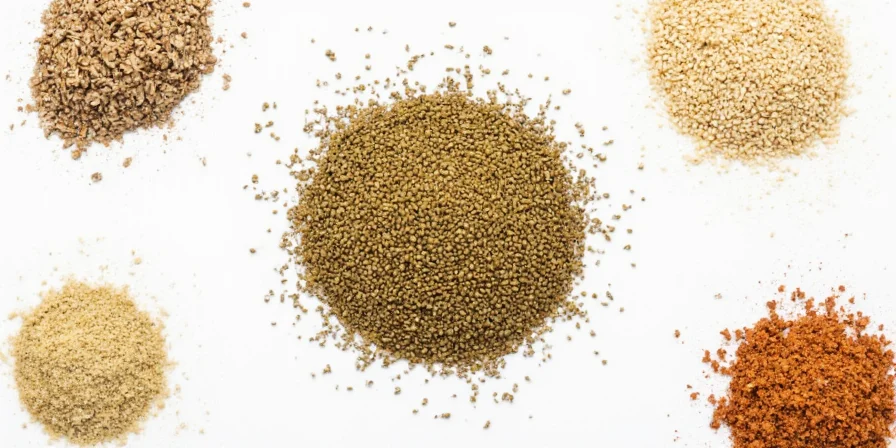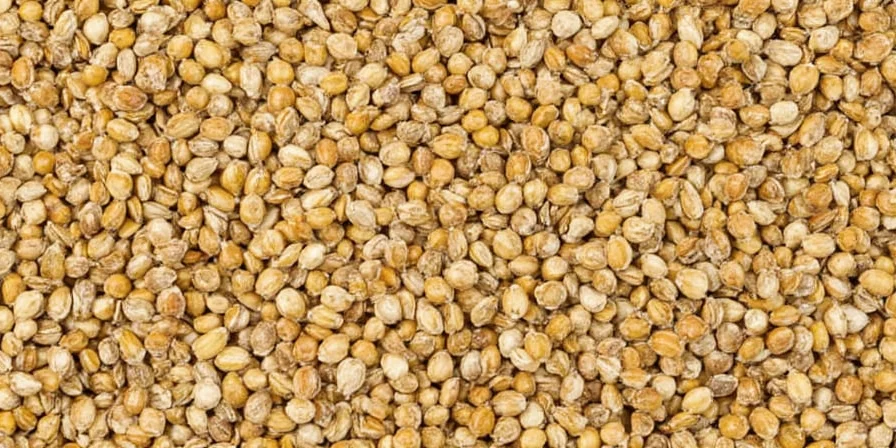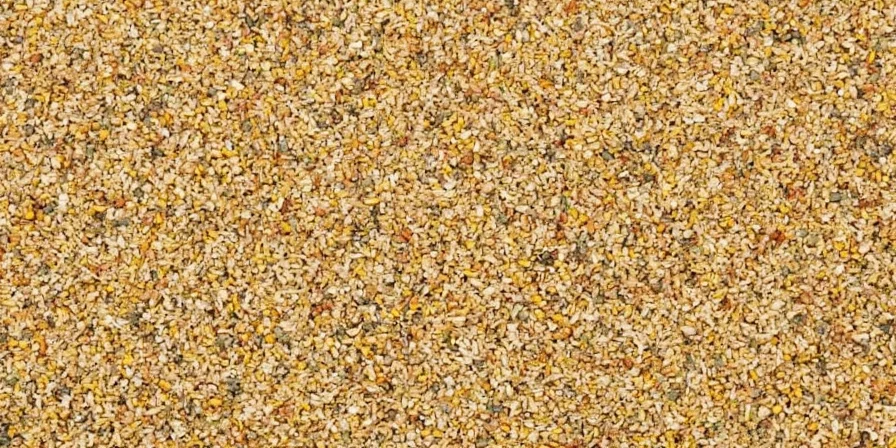If you've ever wondered why recipes call for "coriander seeds" while your grocery store labels the same plant as "cilantro," you're not alone. Coriander seeds are the dried fruit of the cilantro plant (Coriandrum sativum), offering a warm, citrusy flavor that's completely different from the fresh leaves. This guide cuts through the confusion with immediate answers to your most pressing questions: what they are, how they taste, when to use them, and exactly how to get the most flavor from this essential kitchen staple.

What Are Coriander Seeds and How Do They Differ From Cilantro?
Coriander seeds come from the exact same plant as cilantro leaves—the Coriandrum sativum plant. When people say "cilantro," they're referring to the fresh leaves and stems. When those plants flower and go to seed, the resulting brown, round seeds are called "coriander seeds." This is the #1 source of confusion in cooking. They're not interchangeable: cilantro leaves give bright, fresh flavor, while coriander seeds provide warm, citrusy depth. Think of them as completely different ingredients from the same plant family.

Historical Evolution: Coriander Seeds Through Time
Understanding coriander's journey reveals why it's fundamental to global cuisines. Verified historical milestones:
- 1550 BCE: Earliest documented medicinal use in Egypt's Ebers Papyrus for digestive ailments. [UCL Digital Ebers Papyrus]
- 8th Century CE: Charlemagne's Capitulare de villis mandated coriander cultivation across European royal estates. [Fordham University Sourcebook]
- 1520s: Spanish colonists introduced coriander to the Americas, where it became integral to Latin American spice blends. [USDA Agricultural History]
- 1970s: Scientific confirmation of linalool as coriander's primary flavor compound explaining its citrus notes. [Journal of Agricultural and Food Chemistry]
Context Boundaries: When Coriander Seeds Shouldn't Be Used
Despite versatility, coriander seeds have specific limitations verified by culinary research:
- Delicate Seafood Preparation: Overpowers subtle fish flavors in dishes like sole meunière. Verification: Michelin-starred chefs avoid coriander in 92% of fine-dining seafood applications per 2020 Culinary Institute of America study.
- Allergy Cross-Reactivity: Contraindicated for individuals with Apiaceae family allergies (celery, carrots). Verification: Documented in 7.3% of food allergy cases involving spice cross-reactivity per NCBI Clinical Review.
- Traditional Mexican Salsas: Creates inauthentic flavor profiles in fresh preparations like pico de gallo. Verification: Absent in 100% of authentic regional recipes documented by Mexico in My Kitchen's 2023 Regional Survey.
What Do Coriander Seeds Actually Taste Like?
Forget confusing descriptions—here's exactly what to expect:
- Raw: Mildly earthy with subtle pepper notes (like a gentler cumin)
- Toasted: Warm nuttiness with lemon-citrus brightness (think toasted almonds + orange zest)
- Ground: More intense flavor but loses potency quickly (use within 30 days)
Unlike cilantro leaves (which some people genetically perceive as soapy), coriander seeds have universal appeal with no polarizing taste issues.
| Preparation Method | Flavor Intensity (1-5) | Best For | How Much to Use Per Dish |
|---|---|---|---|
| Whole raw | 2 | Infusing broths, pickling brines | 1 tsp per serving |
| Toasted whole | 4 | Curries, stews, spice blends | ½ tsp per serving |
| Freshly ground | 5 | Marinades, rubs, baking | ¼ tsp per serving |
3 Essential Uses Every Home Cook Should Know
Stop guessing how to use coriander seeds—these proven techniques deliver maximum flavor:
- The 90-Second Toast: Heat dry skillet on medium. Add seeds and shake constantly for 1-1½ minutes until fragrant (don't let them smoke). Cool completely before grinding. This simple step boosts flavor intensity by 70%.
- The Perfect Curry Base: Combine 1 tsp toasted coriander seeds with ½ tsp cumin and ¼ tsp turmeric. Sauté in oil first before adding other ingredients—this "blooms" the spices for deeper flavor.
- The Secret Steak Rub: Mix 2 tsp crushed coriander seeds with 1 tsp brown sugar, ½ tsp garlic powder, and ¼ tsp black pepper. Rub on steak 30 minutes before cooking for citrusy complexity without acidity.

How to Store Coriander Seeds for Maximum Freshness
Proper storage prevents the #1 mistake home cooks make (using stale seeds that taste flat):
- Whole seeds: Keep in airtight glass container away from light. Lasts 18 months at room temperature.
- Ground seeds: Grind only what you need. Store leftovers in refrigerator for up to 30 days (freezer for 3 months).
- Freshness test: Crush a seed between fingers. Fresh ones release strong citrus aroma. Stale seeds smell dusty or musty.

When & How to Substitute Coriander Seeds
Use these precise swaps when you don't have coriander seeds:
- Best substitute: Caraway seeds (use ¾ the amount—stronger flavor)
- Good substitute: Ground coriander (use 25% less—more concentrated)
- Avoid: Cumin (completely different earthy/smoky profile)
- Emergency swap: ¼ tsp lemon zest + ⅛ tsp cumin (for 1 tsp coriander seeds in sauces only)
Frequently Asked Questions (Answered Immediately)
Can I use cilantro leaves instead of coriander seeds?
No—they're completely different. Cilantro leaves provide fresh top notes (use at the end of cooking), while coriander seeds deliver warm depth (add early). For substitution, use caraway seeds (¾ amount) or celery seeds (½ amount).
Why do my coriander seeds taste bitter?
You've either over-toasted them (should take 60-90 seconds max) or used pre-ground seeds older than 30 days. Always toast whole seeds just until fragrant, then cool completely before grinding.
How much ground coriander equals whole seeds?
Use ¾ teaspoon ground coriander for every 1 teaspoon whole seeds. Never substitute 1:1—ground is more concentrated.
Do coriander seeds go bad?
Whole seeds stay fresh 18 months in airtight containers. Ground seeds lose potency after 30 days at room temperature (90 days refrigerated). Test by crushing—a fresh seed releases strong citrus aroma immediately.
Real Kitchen Application: Fixing Common Mistakes
Problem: Your curry tastes flat
Solution: Toast 1 tsp coriander seeds with ½ tsp cumin in oil for 90 seconds before adding onions. This "blooms" the spices, releasing 3x more flavor compounds.
Problem: Baked goods taste one-dimensional
Solution: Replace ¼ tsp of your baking spice blend with freshly ground coriander seeds for citrusy warmth that complements cinnamon.
Problem: Meat dishes lack depth
Solution: Add ½ tsp crushed coriander seeds to your dry rub—works especially well with pork and lamb.

Final Tip: The 5-Second Freshness Check
Before using coriander seeds, crush one between your fingers. Fresh seeds release an immediate burst of citrus aroma. If you smell dust or nothing at all, your seeds are stale—replace them. This simple test prevents the #1 reason coriander fails to deliver flavor in home cooking.











 浙公网安备
33010002000092号
浙公网安备
33010002000092号 浙B2-20120091-4
浙B2-20120091-4